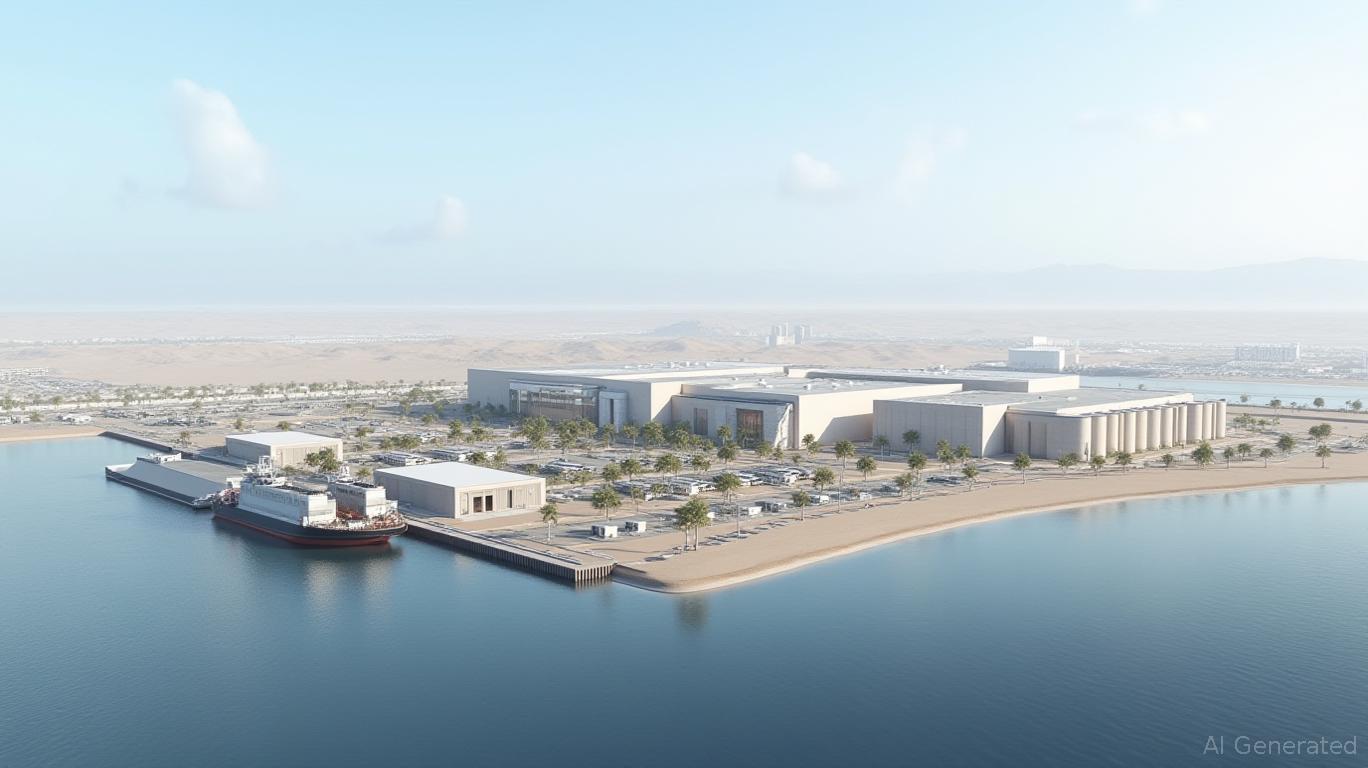NextSource Materials: Pivoting to the Middle East—A Battery Anode Play with Geopolitical and Economic Edge
The global battery materials race is intensifying, and NextSource Materials (NXTMF) is positioning itself as a disruptor. By shifting its strategic focus to the Middle East, the company is capitalizing on two critical trends: the geopolitical push to diversify supply chains away from China and the staggering economics of Saudi Arabia's emerging battery ecosystem. This isn't just a geographic pivot—it's a calculated move to dominate a $300+ billion EV battery market.
The Shift: From Madagascar to the Kingdom of Saudi Arabia
NextSource's decision to pivot stems from both challenges and opportunities. Its Molo mine in Madagascar, while holding 2,500 tonnes of high-purity SuperFlake® graphite, faced operational hurdles in 2025 due to cyclones and inefficiencies. Instead of doubling down on Phase 1, the company adopted “campaign production” to preserve capital while preparing for Phase 2. This pragmatism highlights NextSource's ability to adapt—a key trait in volatile commodity markets.
But the real story lies in the Middle East. The Mauritius battery anode facility, delayed by environmental reviews, now serves as a contingency. The company's focus has shifted to Saudi Arabia, where it plans a 20,000-tonne-per-annum (tpa) facility with potential to expand to 100,000 tpa by 2030.

The Geopolitical Play: Diversifying Supply Chains Away from China
Graphite is the unsung hero of the EV revolution—it constitutes 95% of lithium-ion battery anodes. Yet 80% of the world's graphite is mined in China, a vulnerability that governments and automakers are rushing to address. The U.S. Inflation Reduction Act (IRA) and the EU's Critical Raw Materials Act mandate local content requirements, incentivizing non-Chinese suppliers.
NextSource's Saudi facility isn't just about cost savings—it's about strategic alignment with geopolitical priorities. The Kingdom's Vision 2030 initiative aims to become a global battery manufacturing hub, offering NextSource:
- Government-backed funding: Up to 75% of capital costs at low interest rates.
- Fast-tracked permits: Streamlined environmental and regulatory processes.
- Infrastructure: Access to ports, utilities (electricity at $0.032/kWh), and proximity to OEMs like
This isn't a bet on Saudi Arabia's sunny skies—it's a bet on a $128.5 million annual EBITDA machine.
The Economics: A 20% IRR and a 100,000 TPA Future
Let's cut through the jargon: the Saudi facility's financials are staggering. A Stantec feasibility study shows a 20.3% IRR and a $677 million NPV at an 8% discount rate. With annual revenues projected at $230 million, this isn't a “maybe” investment—it's a mathematical certainty for investors willing to act now.
The capital cost of $280 million may seem steep, but 75% is subsidized. Meanwhile, the relocatable Mauritius equipment (valued at $12 million) and existing SuperFlake® inventory provide a safety net. Critically, NextSource is already in talks with EV manufacturers for offtake agreements, locking in demand before breaking ground.
Why Act Now? The Race to Secure EV Supply Chains
The window to capitalize on this shift is narrowing. Automakers are under pressure to secure battery material contracts by 2026 to meet IRA subsidies. NextSource's head start in Saudi Arabia—paired with its proven SuperFlake® technology—positions it to lock in long-term deals.
Meanwhile, competitors like Sayona Mining (SYA.AX) and Focus Graphite (FMS.V) lag in project economics and geopolitical alignment. Even majors like Tesla (TSLA) are exploring vertical integration, but they need partners with low-cost, non-Chinese supply chains—a niche NextSource owns.
Risks? Yes—but Manageable
Skeptics will point to execution risks: permitting delays, currency fluctuations, or lower-than-expected demand. Yet NextSource has already mitigated many of these:
- The Saudi government's push for battery manufacturing ensures political support.
- The modular design of the facility allows scaling incrementally.
- Existing SuperFlake® inventory and Mauritius equipment provide cash flow flexibility.
Final Call: This Is the Next Big Thing in EV Materials
The EV battery race isn't just about lithium—it's about securing the entire supply chain. NextSource's Middle East pivot checks every box: geopolitical alignment, superior project economics, and a first-mover advantage in a region racing to become the next manufacturing powerhouse.
For investors, this is a high-reward, low-regret opportunity. The math is undeniable, the timing is urgent, and the geopolitical tailwinds are unstoppable. Don't miss the train—NextSource is building the tracks.
Investors should conduct their own due diligence and consult a financial advisor before making investment decisions.

Comments
No comments yet